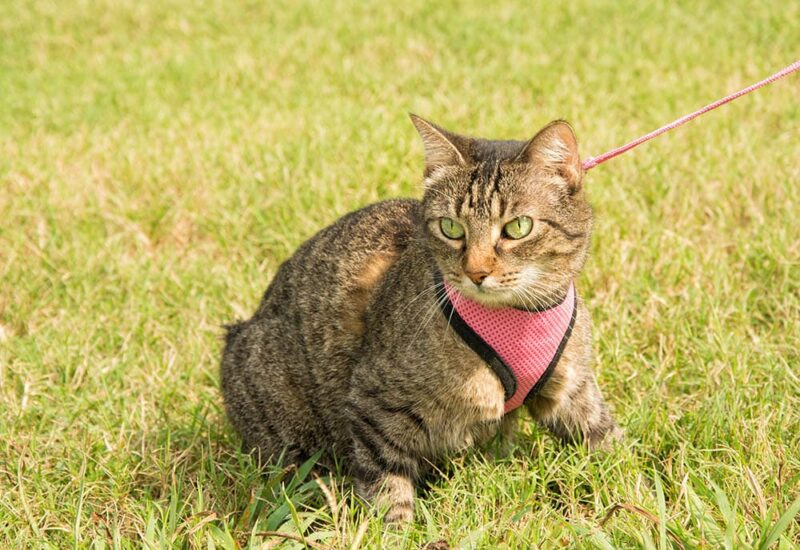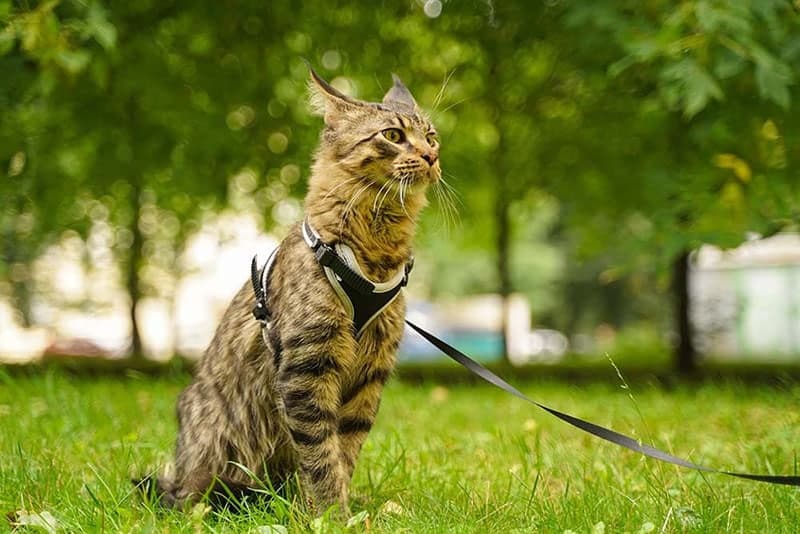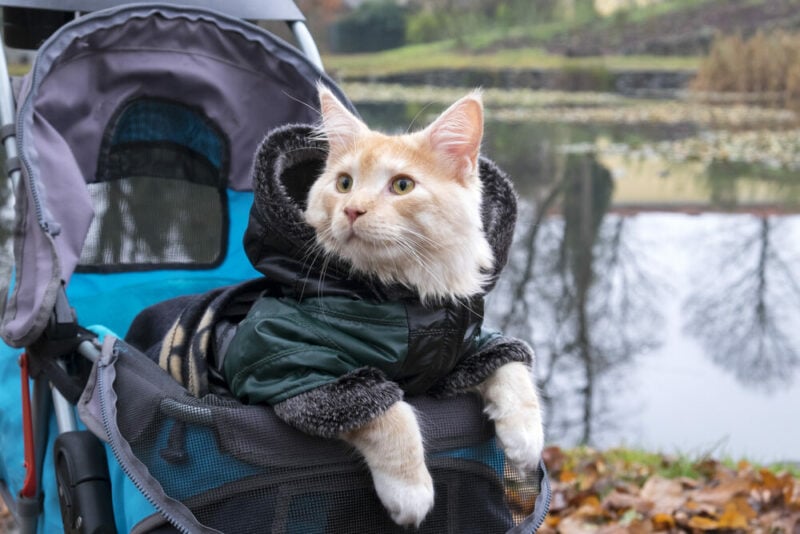Emotional support animals (ESA) are categorized apart from service animals and, therefore, are subject to their own rules, regulations, and requirements. They are important animals that provide comfort and emotional support to individuals with mental health conditions.
To qualify for an ESA, pets in the United States are generally required to obtain a prescription letter from a mental health professional documenting the presence of a mental health condition. While ESAs are not required to wear vests in public, having a service cat vest that identifies the animal as an ESA can be fine in some situations.


How Are Service Animals Defined?
According to the Americans with Disabilities Act (ADA), a service animal must be trained to provide an individual with a disability with disability-related assistance. Common examples of service animals include guide dogs for individuals with vision problems and dogs trained to assist those suffering from seizures.
The ADA does not currently recognize cats as service animals. ESAs receive protection from the way they are treated in other laws, such as the Air Carrier Access Act and the Fair Housing Act; they are not directly referenced in the ADA, but many states and localities have laws that apply.

What Are the Factors to Consider When Choosing Vests for Cats?
Remember that cats performing emotional support roles are likely to be engaged in activities for long periods of time, so they need to be comfortable not only wearing the vest but keeping it on for hours at a time. Breathable fabrics that aren’t too heavy are good choices because they won’t cause cats to overheat when the mercury rises.
Most harnesses are attached to the neck and under the belly of cats, right behind their front legs. This setup ensures that any pull or pressure when the leash is distributed throughout the cat’s body rather than concentrated on the neck. Careful measurements should be taken to ensure the harness fits properly to prevent cats from getting loose.


How to Train Cats to Wear a Vest
Cats can often be trained to wear vests and harnesses fairly easily. Start by letting them just sniff the stuff; after a day or so, try putting it on them for a while and be sure to give plenty of treats during the interaction to make sure the cat has a positive association with wearing the vest. End the encounter before things get frustrating. Continue until the cat is comfortable wearing the vest for long periods of time as they would if it were to be sported in public. Cats should always be supervised when wearing harnesses to make sure they don’t get caught on something and injure themselves or get stuck.

How to Train Cats to Walk on a Leash
Because keeping cats comfortable and under control while acting as ESAs is critical, leash training can make it easier for them to navigate safely in public areas. Once the cat is okay with wearing their harness, you can attach the leash and practice walking with them indoors.
You can take your cat outside and practice walking around the yard before going on long walks. Treats are useful in encouraging cats to participate in activities involving vests and leashes. Remember to keep training sessions short and sweet to prevent your cat from getting bored and losing interest.


Are There Other Options for Delivering Cats?
Hard and soft traditional carriers can make getting around with a cat difficult, but there are alternatives, such as buggies and backpacks, that often make it easier to cross the road with a furry companion.
Cat Strollers
Cat strollers are ideal for larger cats that are a little too heavy to carry comfortably for long periods of time. Most have a durable mesh cover that keeps cats safe and sound while allowing them to watch what’s going on outside.
There are also designs that attach to bicycles, making it easier to transport cats over longer distances. Remember that cats should not be left in carriages unattended as it is possible for them to knock over the carriages.

Cat Backpacks and Wheeled Carriers
Cat backpacks are another option that can work well. Keep in mind that many have weight limits, so not all products work for particularly large cats. Wheeled carriers are helpful when you’re traveling through airports, but it’s important to make sure the airline accepts the brand you choose.

Conclusion
An ESA is not required to wear a vest in public, but having one alerts others that the animal is involved in a support role. ESAs provide comfort to individuals with mental health diagnoses, and they perform different roles than service animals, which are trained to do specific things for individuals who have disabilities.
Cats are not on the list of permitted service animals, as defined by the ADA. ESAs are covered by the Air Carrier Access and Fair Housing Acts
Featured Image Credit: goldeneden, Shutterstock


